The Kathammer or Katwouder mill
The Kathammer or Katwoudermolen is a striking sight in the open landscape near Volendam. The 1896 National Monument not only grinds on the wind, but the mill also houses an electric pumping station. The mill runs regularly and can be visited for groups by appointment only.
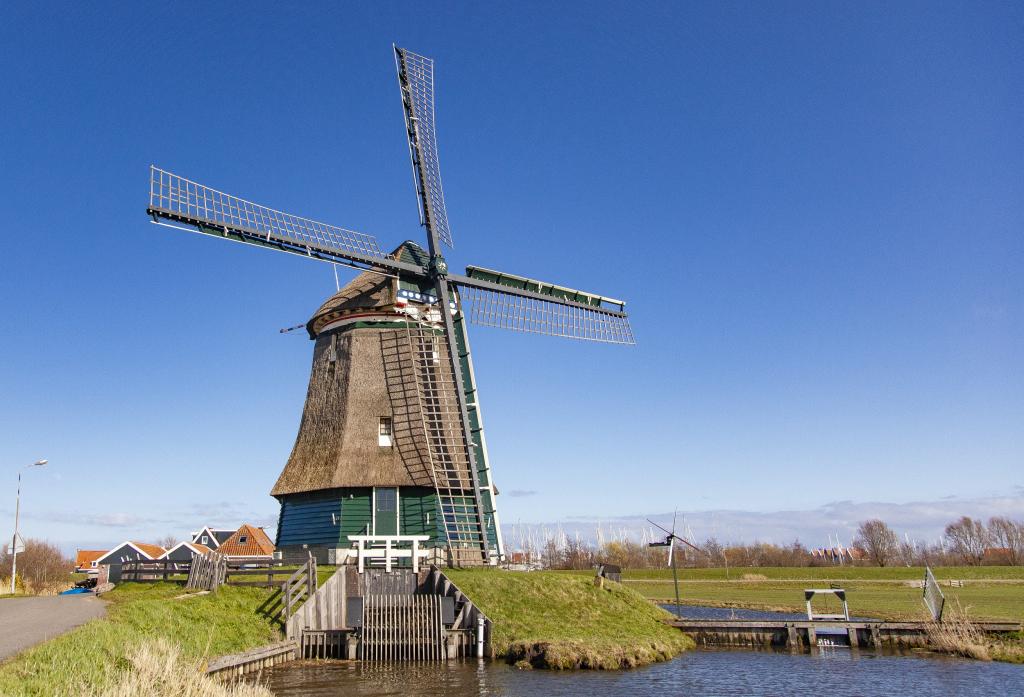
Polder Katwoude
The Kathammer or Katwoudermolen drains the eastern part of the Katwoude polder of approximately 520 hectares. The name of the mill is derived from aspects of the landscape, KAT meaning bonkig fenland, the word HAM stands for recess in the sea (Zuiderzee).
From the polder (1.95 m below NAP), water is pumped up at least 1.7 meters and then discharged to the Markermeer through a drainage sluice. The polder consists of raised bog. Over the centuries the soil slowly subsided due to the settling and oxidation of the peat. This made it increasingly difficult to discharge the water at low tide in a natural way (from high to low) into the Zuiderzee. In 1650 a scoop wheel mill was built to pump up the water, the Hogendijk Mill. The Katwoude polder was cut through by the canal between Edam and Amsterdam in 1663. After this, the mill only pumped the eastern part of the polder. For the western part of the polder, polder Katwoude-Lagendijk, a new scoop wheel mill was built in 1665 on the tow canal.
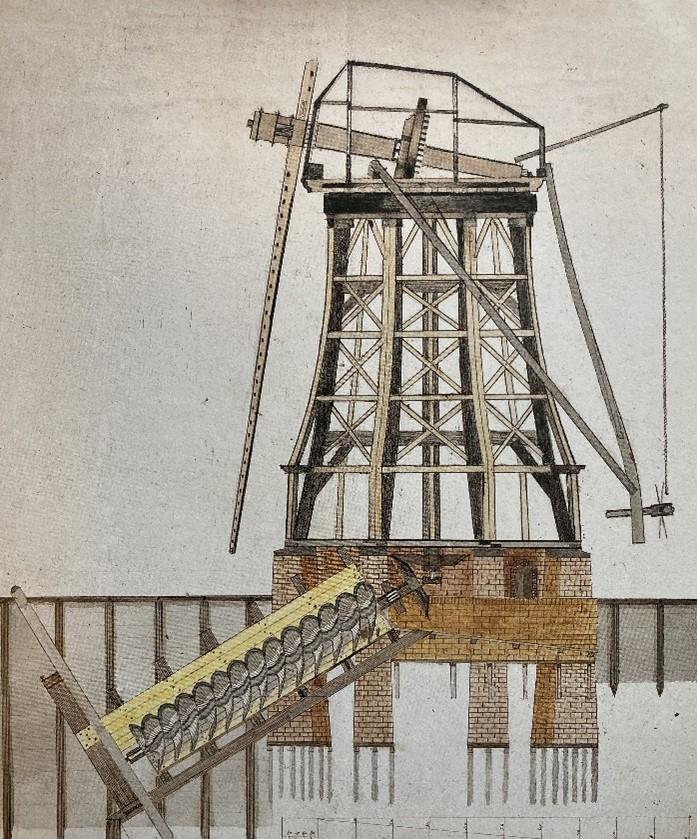
Fire
On December 5, 1895, the Hogendijk Mill burned down due to lightning strikes. The mill was occupied by the miller and his family. Unfortunately, his daughter did not survive the strike and the miller was injured. Because a steam pumping station was too expensive at the time, a new mill was built in 1896. This one stood on the old eight brick piers (wall dams) of its predecessor, which had survived the fire. The mill received a steel auger, very modern for the time. In view of fire danger, the miller no longer lived in the mill, but in the still existing newly built miller's house next door.
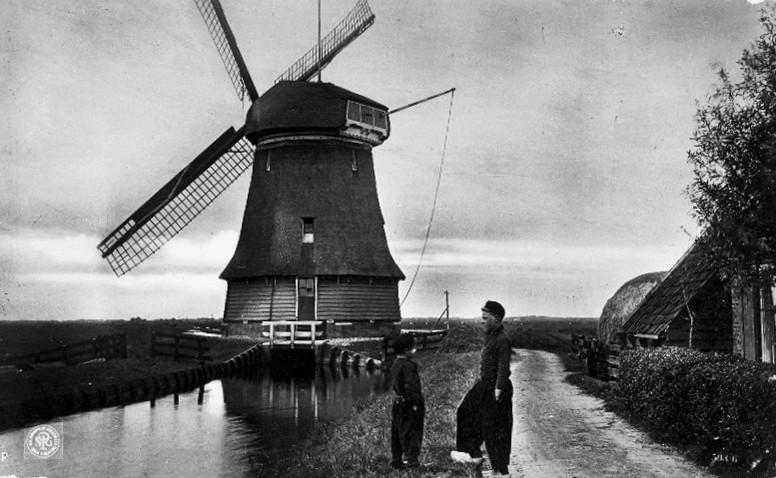
In 1911 a centrifugal pump was installed in the mill, driven by an oil engine. The sails were now no longer needed. Later, about 1930, the hull was sawed off to the cap loft.
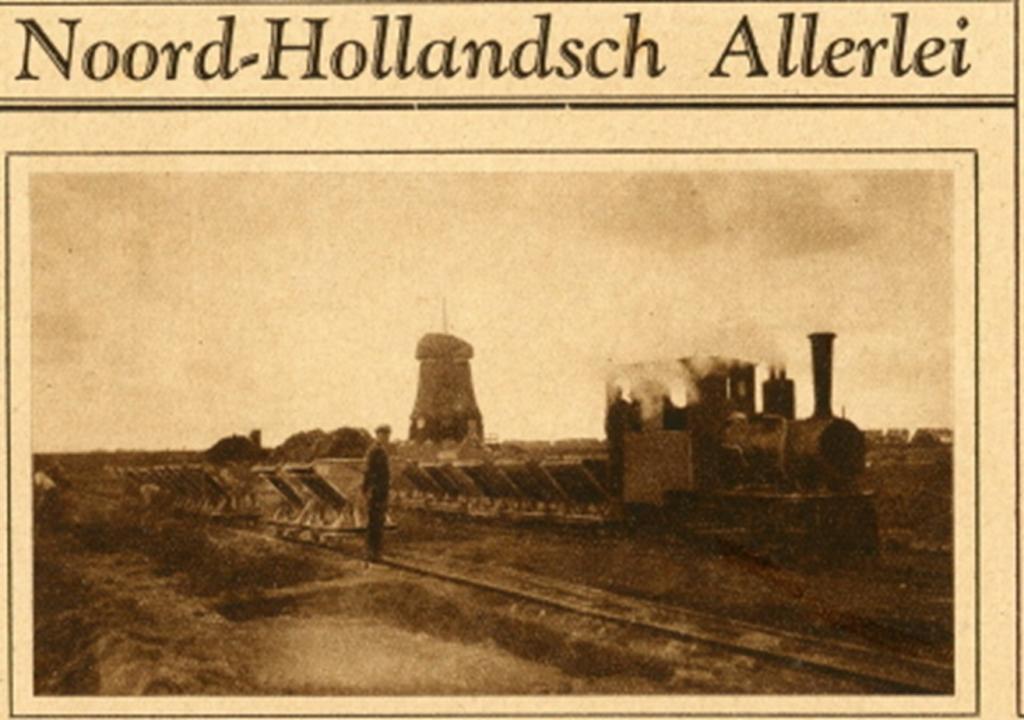
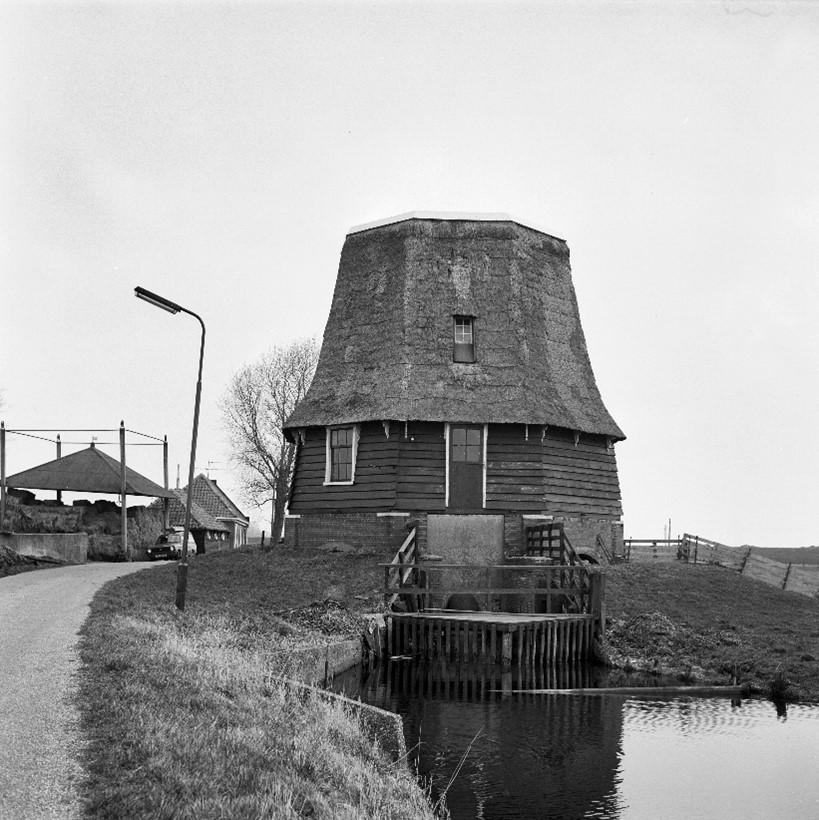
Wind and electric drive
During the 1980s, the tide turned for the derelict mill. The Katwoude polder had meanwhile been absorbed into the large Water Board the Waterlanden, and this began a major restoration in 1987. Because of its special historical and scenic value, the decision was made to rebuild the mill. The octagon was extended to its original height and fitted with a new cap with sails. As a result, the mill is again able to pump the polder on wind power.
In addition, the mill has since housed an electric auger pumping station. This is located under the wooden floor. The pumping station automatically turns on when the water level in the polder is too high. It is not possible to grind on the wind and with the electric motor at the same time.
The auger, with a diameter of 1.85 m, is visible inside the mill through a glass plate. At the top of the auger are guard doors. These doors prevent high water from flowing back into the polder.
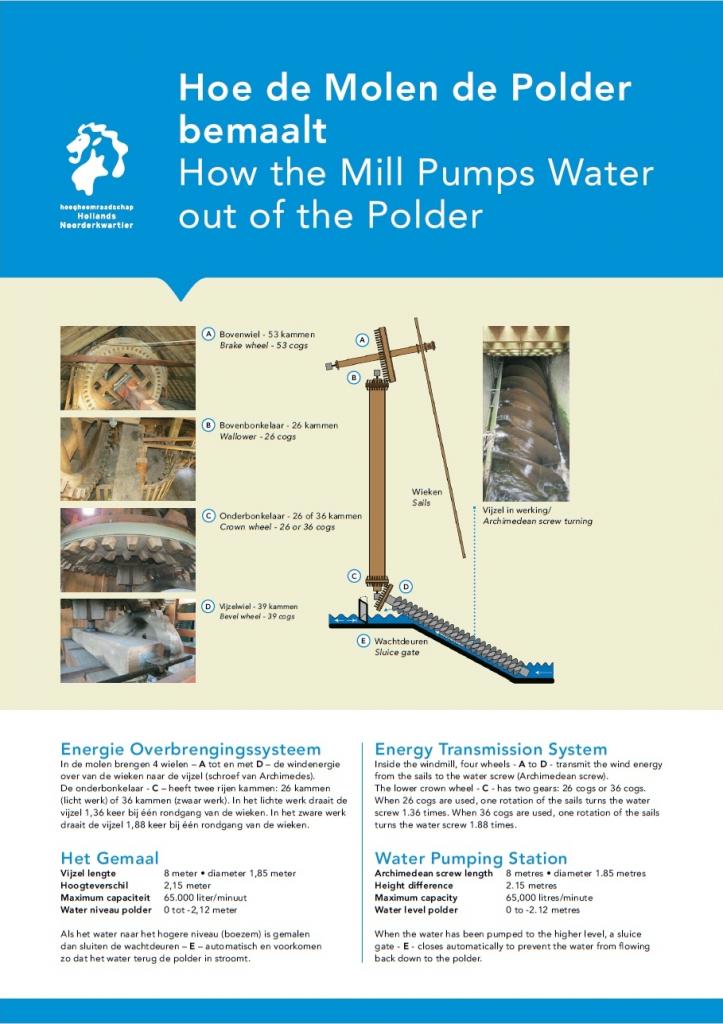
Mill biotope
The mill biotope is the environment of the mill. The mill biotope of the Kathammer or Katwouder mill is very good. There are no tall trees or buildings in the area. This allows the mill to turn well on the wind.
Additional
- EXPO on the reinforcement of the Markermeer dikes, Hoogedijk 1d in Katwoude
- Dike reinforcement Katwoude
- Whispering Mills North Holland
- Whispering Mills podcast series
- To the north is a nature reserve, the Heitje van Katham: The Heitje van Katham is very close to the fishing village of Volendam. Here a peat heath unique to North Holland has developed on a dense ditch with very special flora.
- Originally 17th-century drainage sluice on the east side. The lock gates will be renewed in 2022.
- Eel Route
Conservation of the mill is made possible in part by the National Cultural Heritage Agency and the province of North Holland.